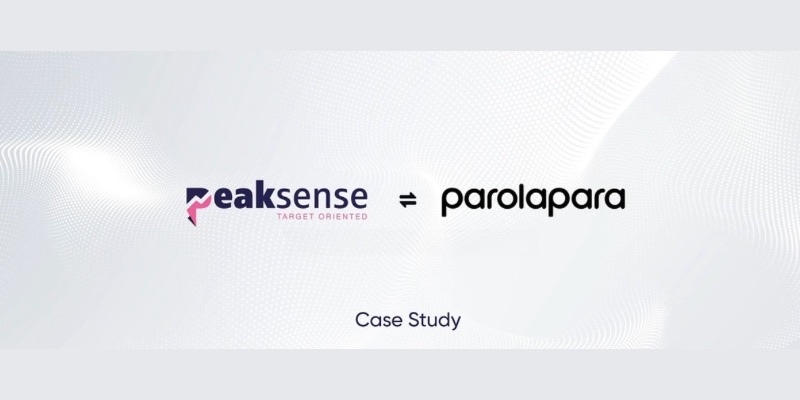Unlocking Google’s Ranking Factors: Boost SEO Strategies for Cybersecurity Companies
November 14, 2024, 5 min read
The leak of Google’s API documentation has uncovered several important ranking factors and previously unknown or unclear features. Beyond the key findings regarding click-through rate, subdomains, and domain age, here are some additional significant ranking factors and other insights revealed by the leak:
1. User Engagement Metrics Beyond CTR
- Dwell Time: The amount of time users spend on a page (dwell time) is now shown to be an influential ranking factor. This further emphasizes that Google values user engagement signals, such as how long someone stays on a page after clicking from search results.
- Bounce Rate: Another engagement signal, the bounce rate, may also affect ranking. Pages with higher bounce rates may be penalized, while those encouraging users to stay and explore further content could benefit from better rankings.
2. Link Signals
- Backlink Quality: The leak confirms that not all backlinks are equal. Google’s algorithm assigns different weights to backlinks based on factors like the authority and relevance of the linking site, suggesting that high-quality backlinks from authoritative sources continue to be crucial for ranking well.
- Anchor Text Relevance: The exact wording in the anchor text used in backlinks can affect ranking, with Google valuing contextually relevant anchor text that matches the content of the page it links to.
3. Content and Keywords
- Content Relevance and Depth: The leak highlights that content relevance and the depth of coverage on a topic are strong ranking signals. Google appears to prefer pages that provide comprehensive, well-researched, and detailed content on a specific subject.
- Keyword Frequency: While keyword stuffing is still penalized, the documentation suggests that the frequency and strategic placement of keywords within a page can positively impact rankings, especially when they match user intent.
4. Mobile Friendliness and Core Web Vitals
- Mobile-First Indexing: With the increasing shift toward mobile-first indexing, the leak reinforces that mobile-friendliness is an essential ranking factor. Optimized sites for mobile are favored in search results, especially in regions where mobile search is dominant.
- Core Web Vitals: Google’s Core Web Vitals, including metrics related to loading performance, interactivity, and visual stability, are also confirmed as ranking factors. Pages that load quickly, offer a smooth user experience, and prevent layout shifts have an advantage in rankings.
5. Local Search Signals
- Google My Business (GMB) and Local Citations: The leak provides further insight into local ranking factors, such as the importance of Google My Business (GMB) profiles, local citations, and consistent NAP (Name, Address, Phone number) information across the web. Local businesses that maintain accurate and complete local listings will likely rank higher in local search results.
6. Security Signals
- HTTPS/SSL Encryption: Security is also a confirmed ranking factor. Google has long recommended HTTPS as a ranking signal, and the documentation suggests that sites using SSL encryption (HTTPS) are prioritized over insecure (HTTP) sites.
7. Behavioral and Social Signals
- Social Media Mentions: While Google denied that social signals directly impacted rankings in the past, the leak suggests that social media mentions (like shares and comments) can indirectly influence rankings by increasing traffic and brand awareness, leading to more backlinks and higher user engagement.
- Search History: Personalized search history and user data are used to fine-tune rankings for individual users. This means that past interactions with Google Search (including clicks, searches, and engagement) can influence the ranking of results for that user.
8. Semantic Search and NLP (Natural Language Processing)
- Contextual Understanding: Google’s algorithm uses advanced Natural Language Processing (NLP) models, like BERT, to understand the context of content and more effectively match it with user intent. The leak reveals that Google considers semantic relevance, meaning it looks at the broader context of a page’s content rather than just matching keywords.
- Latent Semantic Indexing (LSI): LSI keywords (words that are contextually related to the main topic) play an important role in helping Google understand a page’s subject. Pages that use related terms naturally within the content may be ranked higher.
9. E-A-T (Expertise, Authoritativeness, and Trustworthiness)
- Author and Content Credibility: The leak affirms that E-A-T remains a key factor for Google in ranking pages, especially for YMYL (Your Money, Your Life) topics such as health, finance, and law. Content written by experts, especially those with visible credentials, is preferred.
- Trustworthiness of Sources: Google places higher value on content from trusted and authoritative sources. This is reflected in the prominence of well-established websites and recognized thought leaders.
10. Freshness of Content
- Content Freshness: Google’s algorithm values new or recently updated content, especially for queries where freshness is important, like news or trending topics. The leak shows that Google gives higher rankings to fresh content when the search query requires up-to-date information.
11. Multimedia and Structured Data
- Rich Snippets and Structured Data: Pages with structured data (like Schema markup) will likely be favored in search results. The leak supports the notion that rich snippets (such as reviews, ratings, and other enhanced snippets) improve visibility and click-through rates, which can, in turn, affect rankings.
12. Site Architecture and Internal Linking
- Site Structure and Navigation: The leak confirms that a website’s overall structure and internal linking matter for rankings. A well-organized site with straightforward navigation and logical internal linking can help Google crawl and index content more efficiently, improving rankings.
- Silo Structure: Websites that use a silo structure (grouping content into relevant categories) may benefit from improved rankings, as it helps Google understand the thematic relevance of pages on a site.
These findings highlight how complex and multifaceted Google’s ranking algorithms are, incorporating a mix of user engagement, content quality, technical SEO factors, security, and social signals. The revelations from the leak offer actionable insights for SEO pros to optimize their strategies and focus on these previously unknown ranking factors.
13. Bonus: Actionable Tips for SEOs
- Enhance User Engagement: Monitor and optimize user interaction metrics such as click-through rates, time on page, and bounce rates to align with Google’s NavBoost system.
- Implement Structured Data: Utilize schema markup to provide search engines with detailed information about your content, improving indexing and visibility.
- Focus on E-E-A-T: Develop content that showcases your expertise and builds trust. Highlight author credentials and provide accurate, well-researched information.
By integrating these insights from the latest leak of Google’s API documentation, SEOs can refine their strategies to align with Google’s evolving algorithms and enhance search performance.




























